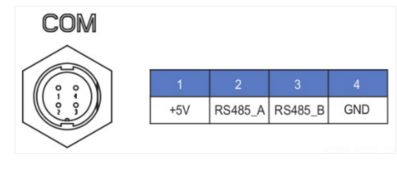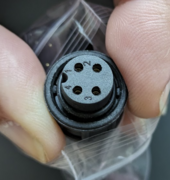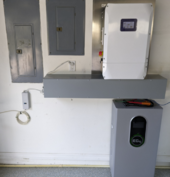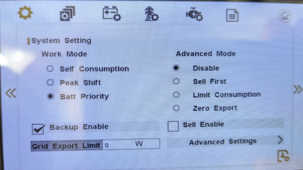Set it to lead acid, set voltages, and see what happens?
Funny you should say that...
Today we were running the system grid down on battery to do a burn in test. About 3 hours into the test, the inverter shutdown and the backup panel went dark. Battery was at 88%.
The inverter reported a battery comm error. In lithium mode, if the battery comms has an error, the inverter no longer uses the battery and it shut down. My early apparent success getting the inverter to talk to the battery was falsely encouraging and that protocol isn't 100% reliable.
So I disconnected the battery comm cable, reprogrammed the inverter to lead acid/custom settings, used the EG4 settings in the manual for bulk, float, cutoff, etc. Now the system is running again on battery but this time without battery comm. So far, all is well, but we are only 2 hours into this test so far. I intend to run the battery down to 20% or so overnight to check it out.
If this works, and it seems like it will, then battery comms is a failure point and using old style voltage levels will be more reliable. This will also stop the battery charge/discharge cycling, another indication that battery comms wasn't performing well.
What this also means is that my interest in moving the system to Solar Assistant is higher. With SA, I can separately monitor the inverter, battery #1, and battery #2. I can then automate any actions based on battery SoC in SA if I want to.
The Solarman app that comes with the unit is mediocre at best. I am sure SA will be far superior to monitor and control the unit.
Can the ct's share a common cat5 cable? They only use two wires. It would be easier to use a splitter at both ends, and run one cat5 the 75' vs two cat5 cables? .
The supplied CTs with the unit have a cable length of about 6 ft or so. For my install that worked nicely. The CTs sit in the bottom of the main panel where the utility feed comes in. I then run them in a small plastic flex conduit to the trough, then they go to the inverter and plug into the RJ45s there. I have maybe 2 ft spare length. It is important to get the CT arrow direction right, and to get L1 versus L2 right.

If you were running them further, then I would take one network cable and use two punch down RJ45's at each end. Then plug the CTs in the RJ45s at one end, and use a short patch cable at the other to go to the inverter. You would have to learn which pins are active and workout the signal mapping. Make sure to use pins which are twisted together for each CT (pin 1/2, 3/6, 4/5, 7/8).
The CTs supplied fit my feed cables without difficulty (200 amp service).
Mike C.











